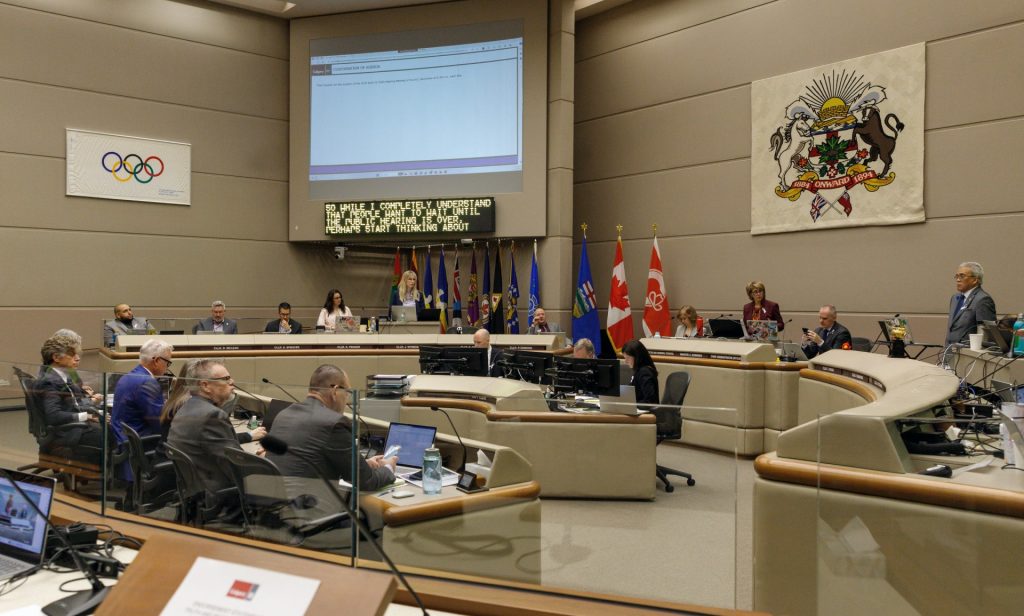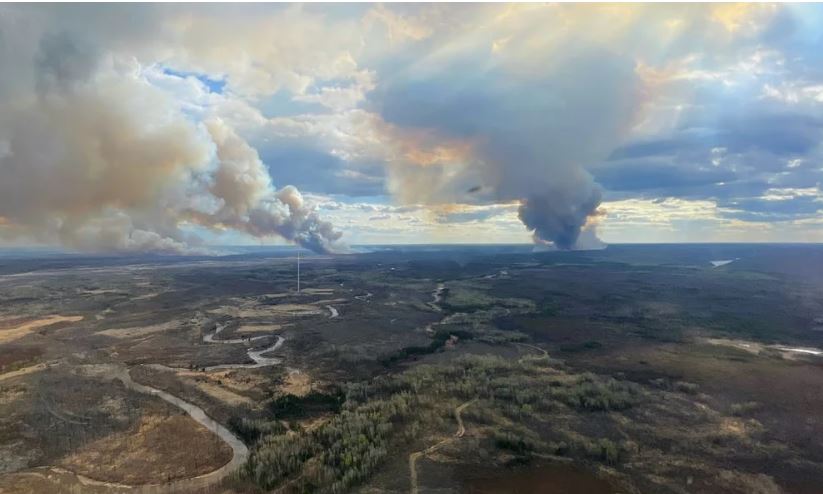Committee releases 28 recommendations aimed at making Calgary’s downtown safer
Posted Mar 6, 2024 10:49 am.
Last Updated Mar 7, 2024 8:46 am.
A report released Wednesday provides an honest and extensive look at the situation in Calgary’s downtown, plagued with the consequences of addiction and mental illness, homelessness, and lack of safety on public transit.
Now, after seven months, a board of seven people with a wealth of knowledge in their fields have developed 28 recommendations to tackle the various issues, including government response, strategic communications, community collaboration and specialized initiatives.
“These 28 recommendations come together to create a greater and safer environment for Calgarians downtown,” said Mayor Jyoti Gondek following the announcement.
The Downtown Safety Leadership Table (DSLT) consulted with more than 45 community partners on how to better understand the issues, experiences, and concerns related to downtown safety, including Indigenous elders representing Treaty 7 Nations, the Calgary Homeless Foundation, The Drop-In Centre and Alpha House, Tourism Calgary, the Calgary Hotel Association, post-secondary institutions, arts and culture groups, and more.
Calgary’s downtown has visible safety concerns, and among those who live, work, visit and/or spend time downtown, perceptions of safety are generally negative, according to the DSLT.
Most concerns around safety stem from open drug consumption, drug activity and drug related debris, the increase and enforcement of makeshift and permanent encampments, and the unpredictable behaviours of those who struggle with addiction and other mental health issues, it adds.
However, in most cases, experts say those with addictions and mental health challenges are more likely to be the victims of crime or to commit crimes themselves, “they are not, as a rule, dangerous to bystanders.”
WATCH: Calgarians are feeling safer using transit
Inn from the Cold executive director Heather Morley, Calgary Downtown Association executive director Mark Garner, Bow Valley College director of government affairs Brett Bergie, CMLC vice president of communications and strategic partnerships Clare LePan, BOMA Calgary government and member relations manager Jay Islam, Elizabeth Fry Society executive director and Aboriginal Standing Committee on Housing and Homelessness chair Katelyn Lucas, and Calgary Police Service superintendent Scott Boyd were all part of the board, and concluded that service delivery and justice systems are continuing to fail the most at-risk members of the community.
“Difficulties of access to addiction and mental health treatment options, to affordable housing, and to supportive facilities for at risk populations — perpetuate the foundational issues,” the report says.
Members from historically marginalized communities also indicated during research that racism and prejudice impact the sense of safety for those needing to access services.
These issues contribute to the real and perceived lack of safety in the downtown core, which permeates through transit stations and on transit vehicles.
Many people avoid using transit at night, especially downtown, due to concerns about safety.
The results of a survey released last month showed that despite Calgarians overall feeling more safe using transit than they did six months ago, almost half of respondents still avoid taking the bus or train due to safety.
Other issues uncovered during this research include a “significant” shortage of managed indoor spaces for those experiencing homelessness, the inadequacy of service co-ordinations for offerings such as healthcare, harm reduction, shelter, and inadequate co-ordination between enforcement and outreach services.
Social service agencies are left in a tough spot as well, according to the report, due to shortfalls in funding and finding qualified staff.
The DSLT also says it heard about an unmet need for specialized services — for example, for young adults who age out of youth shelter/care and turn to adult shelters.
Each category that the board deems in need of attention has been identified, and broken into goals based on a realistic timeline of one year, one to three years, and three-plus years.
“We just don’t want this to be another report, we want to engage and stay engaged so the formation of a safety table or a safety committee to continue to work with the city on these is a priority,” Garner said.
Council will now look at all the recommendations, and Gondek has said she plans on providing all the details to the provincial government as well.
“I know that administration is very eager to get to work on the things they can do quickly,” she said. “Where there is council direction required, I will work very closely with my colleagues, particularly Coun. [Terry] Wong, who represents the downtown.”
Garner added that the approach to applying these recommendations, as it related to resource and funding allocation, is in the hands of the municipal government.
“The next step is now the report goes into the city and city administration will then peel back on the recommendations and determine the associated costing, funding, and implementation strategies,” he said.










